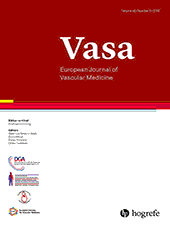Radial artery pseudoaneurysms after transradial cardiac catheterisation
Abstract
Abstract. Background: Although uncommon, radial artery access site complications are likely to become more frequent with the increased adoption of transradial cardiac catheterisation. There is a lack of data regarding the incidence and clinical features of radial artery pseudoaneuryms. We aimed to describe the incidence, clinical features and management of radial artery pseudoaneurysms in a high-volume transradial cardiac catheterisation centre. Patients and methods: We performed a search of the Vancouver Island Health Authority medical imaging database from 1st Jan 2008 to April 2012 looking for all radial and femoral artery pseudoaneuryms occurring after cardiac catheterisation. Hospital charts were reviewed to determine patient and procedural characteristics as well as management and outcome. Results: There were a total of 14,968 coronary procedures performed over the four year search period, of which 13,216 (88 %) were trans-radial. The incidence of radial artery pseudoaneurysm after cardiac catheterisation was 0.08 %, and did not differ between transradial diagnostic angiography and PCI (0.07 % vs 0.08 %; P = 0.90). In contrast, the incidence of femoral artery pseudoaneurysm was higher, at 1.4 % (P < 0.0001). Patients with radial pseudoaneurysms were generally elderly, with a median age of 77 years, and there were no gender differences. Only one patient had received a glycoprotein IIb / IIIa inhibitor, whilst two received warfarin post-procedure. The majority of cases (80 %) were treated with surgical repair. Conclusions: We have demonstrated that radial artery pseudoaneuryms are a rare but important complication of transradial cardiac catheterisation, with patients generally requiring surgical repair. Most patients were elderly, but surprisingly only a minority were anti-coagulated with warfarin.



